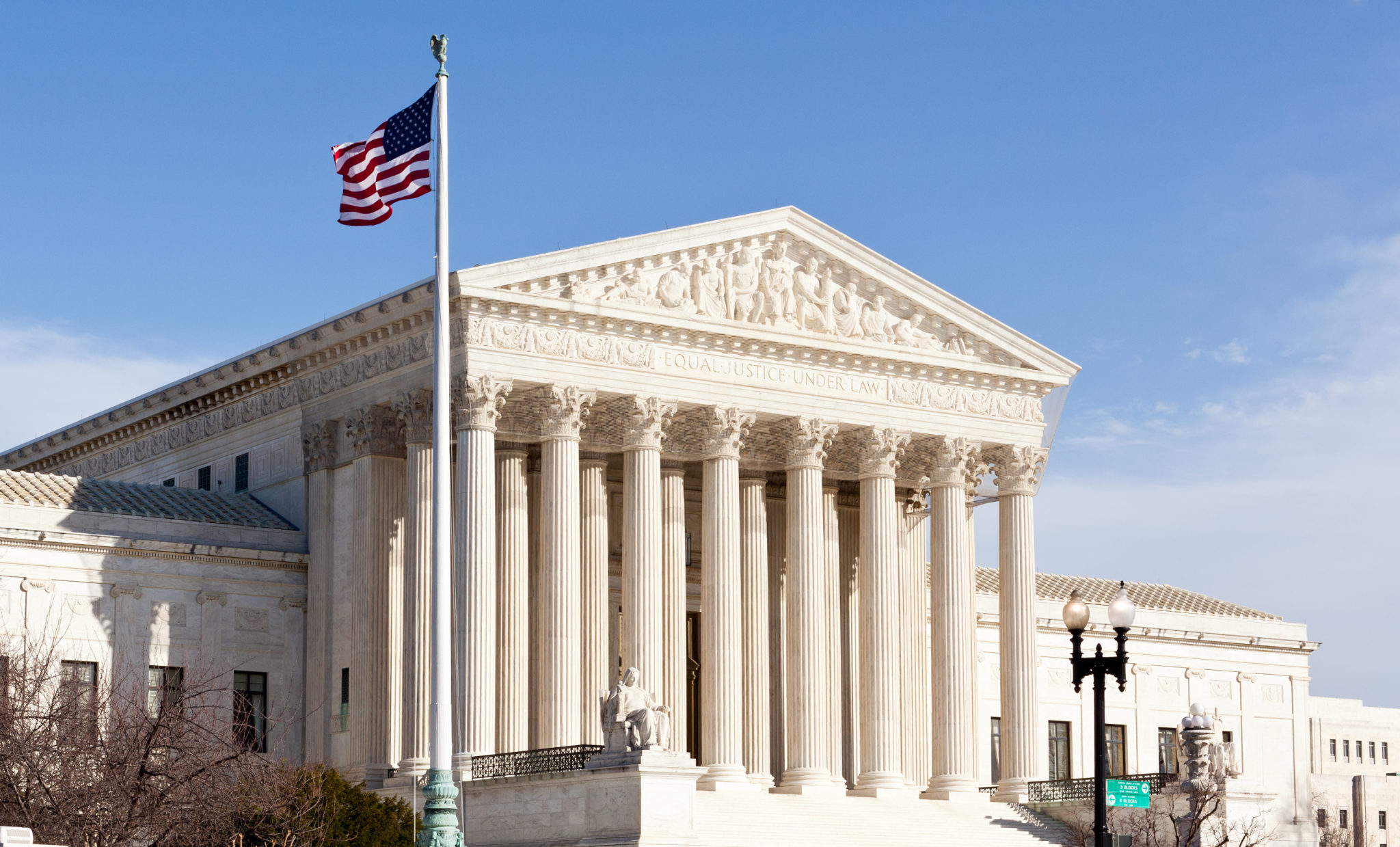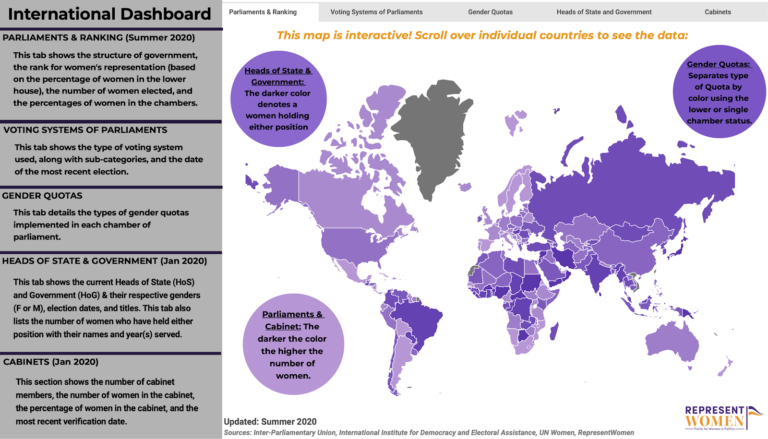Every year the international community fighting for gender equality celebrates International Women’s Day on March…
Navigating A Patchwork Post-Roe World: Part I

Nearly two months after the overturning of Roe v. Wade, there seem to be far more questions than answers. An unstable political scene, coupled with a highly nuanced, complex legal landscape makes identifying relevant information nearly impossible.
In an effort to make civics accessible to all, we are providing a short series of posts on the basics of the post-Roe landscape. This is Part I.
Dobbs v. Jackson Women’s Health Clinic
The Decision Break Down
At the heart of the Dobbs decision was the consideration of whether the Supreme Court could find a constitutional right to abortion for pregnant people. In the final decision, released June 24, 2022, the Court ruled that there are no constitutional protections for abortion, therefore states are able to restrict abortion as their individual legislatures choose. The bulk of the majority opinion relied on a reading of the 14th amendment, particularly the due process clause.
In past cases, the Supreme Court has used the 14th amendment to uphold modern rights that were not explicitly stated or defined in the Constitution. Such rights include access to birth control, same-sex marriage, and interracial marriage. When deciding Roe in the 1970s, the Justices derived an implicit right to privacy from the 14th amendment. However, the Court acknowledged that states may have a desire to protect the “potential of human life.” The clash between that potential and the right to choose an abortion are competing interests which were balanced by Roe’s trimester framework, in which states could regulate abortion with each new trimester and up until birth. This framework was replaced in the 1992 case Planned Parenthood of Southeastern Pennsylvania v. Casey which reaffirmed Roe (5-4 vote) and established a “fetal viability” metric.
In writing the majority Dobbs opinion, Justice Alito – joined by Justice Thomas, Gorsuch, Kavanaugh, and Barrett – wrote that Roe “held that the abortion right, which is not mentioned in the Constitution, is part of a right to privacy, which is also not mentioned.” Relying on a rational basis test, the Justices decided that so long as a state legislature articulates that a regulation on abortion “would serve legitimate state interests,” these regulations must be allowed.
The Dissent:
Justices Breyer, Sotomayor, and Kagan wrote the dissenting opinion. The dissent argued that the majority upset the balance of rights established in the Roe precedent (i.e. bodily autonomy for the pregnant person versus the states’ interest in protecting fetal viability). The dissent further argued that by disrupting this balance and reading the 14th amendment through an 18th century lens, the majority opinion is relegating “women to second-class citizenship.”
Legal Responses to Dobbs and the Overturning of Roe:
Although many have seen this decision as a clear step in ending abortions across the nation, the response from states and other branches of the federal government in recent weeks have been varied.
Executive Action – July 8, 2022:
On July 8, President Biden signed an Executive Order (EO) Protecting Access to Reproductive Health Care Services. This EO directs the Department of Health and Human Services to protect access to abortion and related medications on a federal level. Actions include: directing hospitals to perform abortions if the life of the mother is at risk, ensuring continued access to birth control and contraceptive counseling, increasing education efforts to provide accurate information about rights and access, and organizing networks of volunteer lawyers to represent individuals threatened with legal consequences for seeking reproductive and abortion related care. Additional steps include protecting privacy as well as engaging in coordinated efforts across federal offices and departments.
Executive Action – August 3, 2022
On August 3, President Biden signed a second order, Executive Order on Securing Access to Reproductive and Other Healthcare Services. In addition to reaffirming previous guidance, the new EO directs the Secretary of Health and Human Services (HHS) in three ways. First, it directs HHS to find new ways of increasing people’s access to reproductive healthcare, including expanding access to Medicaid, in order to assist patients who must travel out of state to access abortion services. Second, it directs HHS to ensure that healthcare providers comply with non-discrimination laws. This is important for healthcare providers who may be concerned or confused about their legal medical obligation in light of new state-imposed restrictions on abortion and reproductive related care. Finally, the EO directs HHS to conduct and analyze new research on maternal health and related health outcomes.
The Biden Administration has expressed that they will continue to work with states on solidifying and reaffirming women and pregnant person’s access to reproductive care without violating the Hyde Amendment, which blocks the use of federal funds for abortion except in cases of rape, incest, or threats to the life of the pregnant person.
Congressional Action:
The Democratic-controlled House has passed two bills intended to increase access to abortion, however, neither bill is expected to pass the split Senate.
First is the Women’s Health Protection Act of 2022 which was passed in a 219-210 vote. A previous iteration was passed in September of 2021, but failed in the Senate in May 2022. The new version would stop states from passing bans on abortion earlier than 24 weeks – the general mark of fetal viability – and allows for exceptions after viability in cases where the life of the mother is at risk. Additional provisions include limits on states providing inaccurate information and requiring waiting periods or further tests.
The House has also passed the Ensuring Access to Abortion Act of 2022 in a 223-205 vote, which limits states’ ability to block a woman from traveling to obtain an abortion. This includes protections for doctors who have traveled outside their home state to provide reproductive care.
State by State:
Over a month after the Dobbs ruling, the response from states has varied widely:
- 20 states as well as Washington D.C. have preexisting laws or rulings which have left abortion entirely legal.
- Eight states have kept abortion legal, but could limit or ban it through judicial rulings or legislative change.
- Three states have abortion bans expected soon: Idaho, Indiana, and Tennessee.
- Four states have gestational limits on abortion. Georgia, Ohio, and South Carolina ban abortion after six weeks while Florida bans abortion after 15 weeks.
- 10 states ban abortion with little to no exception. These states have the strictest bans in the nation.
- Eight states do not allow for any exception to the abortion ban: Alabama, Arkansas, Kentucky, Louisiana, Missouri, South Dakota, Texas, and Wisconsin.
- Mississippi has a ban on abortion except in the case of rape.
- Oklahoma has a ban on abortion except in the case of rape or incest.
- Five states attempted to enact bans or limitations but were blocked by the courts. States with legal blocks include: Arizona, North Dakota, Utah, West Virginia, and Wyoming.
In the coming months, these numbers will continue to evolve as legislation is passed, voters decide on upcoming measures, and advocacy organizations such as Planned Parenthood and the ACLU sue state legislatures. Lawsuits have currently been filed in Florida, Georgia, Idaho, North Dakota, Ohio, Oklahoma, South Carolina, and West Virginia. Wisconsin also has a pending lawsuit filed by the state attorney general and the governor to block an 1849 law banning abortion.





